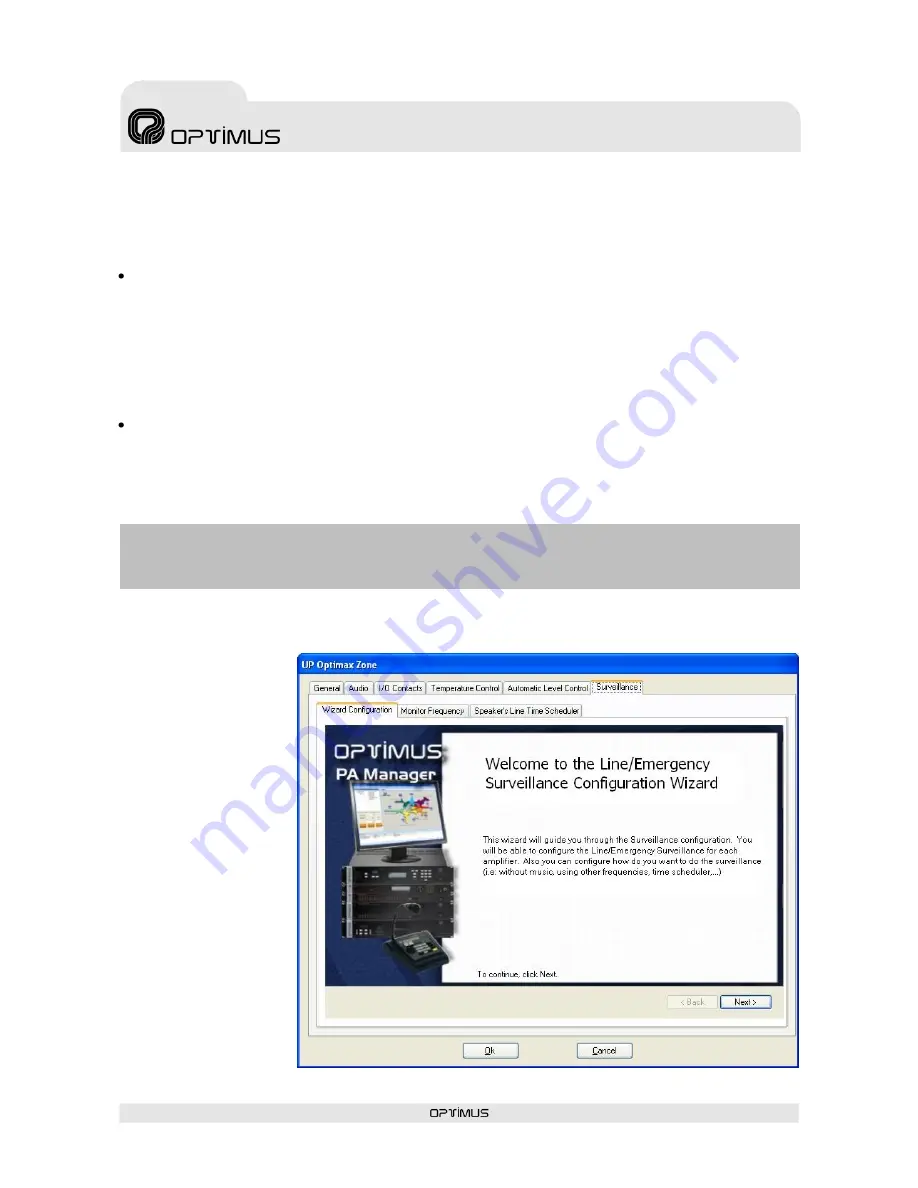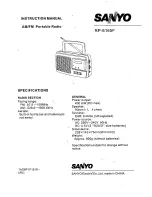
UP-67ETH, UP-127ETH,
UP-247ETH, UP-367ETH
Digital power unit
UP-x7ETH version 1.1
39
IN INSTALLATIONS WITH LOUDSPEAKER LINE AND EMERGENCY SURVEILLANCE, FOR SURVEILLANCE OF THE LOUDSPEAKER LINE
AT NONAUDIBLE FREQUENCIES, USE THE FREQUENCY WHOSE VALUE IS AS FAR AWAY AS POSSIBLE FROM THE EMERGENCY
SURVEILLANCE FREQUENCY.
6.7. Configuration of the Surveillance tab
By clicking on this tab, the surveillance parameters of the loudspeaker line and of the emergency input of
the amplifier can be configured.
Loudspeaker line surveillance:
For this purpose, the DSP of the amplifier injects various frequencies
into the loudspeaker line, which it then collects and analyses in order to detect the status of the line
(open line, short circuit or correct line status).
The frequencies used for this monitoring can be nonaudible (20 kHz or 18 kHz) or audible (4 kHz or
400 Hz).
Constant monitoring (continuous measurement) is achieved through the use of nonaudible frequencies.
Audible frequencies are generally used to confirm the line faults detected during measurement at high
frequencies.
Emergency surveillance:
The device connected to the emergency input must generate a high
frequency signal (17720 Hz, 18000 Hz, 19250 Hz or 20000 Hz). The system performs a constant check
of the high frequency signal, generating an alarm in the event of short circuit, interruption of continuity
or disconnection of this input. The alarm generated is sent through the IP network towards the
control PC or the equipment units prepared to receive these alarms (DVA-102ETH, FC-600ETH, DC-
600ETH).
Once the system is in operation, it is possible to generate surveillance reports, which provide a graphic
representation of the behaviour over time of the loudspeaker lines and the critical path of an installation.
For more information, consult the Optimax installations software manuals.
To configure the
surveillance, select the
Surveillance
tab. An
assistant appears which
will guide you through
the process of
configuring the
surveillance. Click on
Next (1).
(1)
















































